Learn
Elizabeth I
Never marrying, Elizabeth I was a politically shrewd thinker. She
- kept strong her foreign alliances,
- defeated the Spanish Armada making England the ruler of the seas so that men like Sir Francis Drake and Walter Raleigh could begin the process of colonization in the area now known as the United States,
- ushered in the Golden Age of great literature with works of men like William Shakespeare and Christopher Marlowe, and
- though she was a strong supporter of the Anglican or English Church, she was more tolerant of other faiths than her sister Mary who had earlier persecuted English protestants.

James VI
When Elizabeth I (Tudor) died in 1603, her cousin James VI (Stuart) of Scotland became the ruler of England, but since he was the first James to rule in England, he became James I (r. 1603-1625) of England (This means that James I of England and James VI of Scotland were the same person).
You probably know a bit about him:
- In 1607, he commissioned the retranslation of the Bible under the leadership of a group of Biblical scholars, and it became the King James Version of the Bible.
- In 1607, Jamestown was founded in the United States while James I was king.
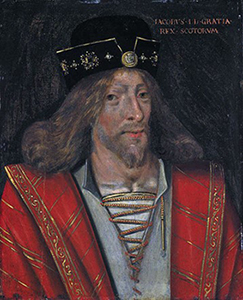
James I believed strongly in divine right God-given right to rule, so he did not value or consider what the English Parliament comprised of two houses - the House of Commons and the House of Lords had to say nor did he respect the emerging businessmen’s rights to property causing much resentment toward him. In addition, James was not tolerant of a growing group of people who did not agree with his religious views, the Puritans people who wanted to purify and reform the English Church even more than Elizabeth I had .

Charles I
When King James VI of Scotland's son, Charles I, came to power in 1625, he also held to the divine right view of rule and chose to rule without Parliament at all. The Parliament tried to limit his power through their Petition of Right of 1628 which attempted to limit the powers of the king.
While he was unpopular for his political views and actions, his religious views really caused him trouble. He was married to French Catholic Henrietta, aunt of King Louis XIV. The growing number of Puritans in the House of Commons did not support the king and pushed for revolution. In 1642, the English Civil War began. The question was this: Where did the power rest - in the monarchy or the Parliament?
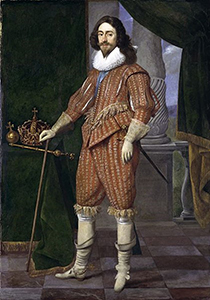
The English Civil War
The English Civil war lasted until 1649 when King Charles I was beheaded and the rest of the royal family fled to France for safety. The monarchy was dissolved and a Commonwealth republican form of government was formed. Watch James 1 to Oliver Cromwell.
Open James 1 to Oliver Cromwell in a new window
Note: The presentation may take a moment to load.
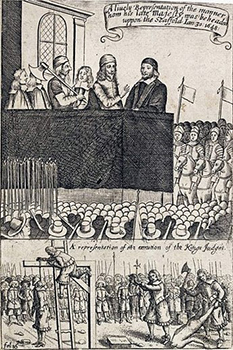
Charles II
From 1649 until 1660 when Charles’ son Charles II was restored to the monarchy, there was no monarchy in England. The Puritan leader of the House of Commons, Oliver Cromwell, controlled the army and when he took over in 1653, the five years of his absolute rule was known as the Protectorate, and he took the position of Lord Protector. He ruled as though it were a military dictatorship.

The English people became tired of Cromwell’s puritanical rule, and when he died in 1658, the people worked to restore the English monarchy. The Parliament wanted to ensure that they would retain some power and that the king would listen to them and allow them say in the workings of the government.
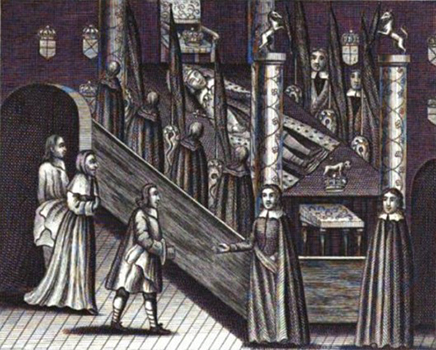
In what was known as the Restoration, Charles II, eldest son of the former King Charles I, came to power in 1660, and he was cautious with and agreeable to working with the Parliament.
Remember that Charles and his entire family had moved to France after his father died and lived in a country under the absolute and divine right rule of Louis XIV. The English people were afraid Charles II might become Catholic and try to impose absolute rule in the style of Louis XIV. Do you remember studying Louis XIV and Versailles in your last unit? You can probably understand their fear.
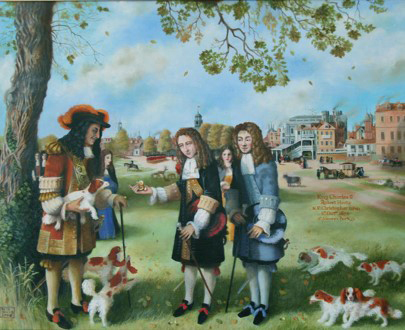
James II
At the death of Charles II in 1685, his younger brother James II came to power. He seemed more Catholic than his older brother.

When he had a male heir in 1688, James caused the English people to fear the coming of a Roman Catholic monarchy supported by the French absolutist and made the English Parliament offer the English throne to James’s daughter Mary who was a Protestant. Mary and her Dutch husband William of Orange, came to power in 1689. This transfer of power was known as the Glorious Revolution.

English Bill of Rights of 1689
In order to ensure that the monarchy was limited in power, the English Parliament enacted the English Bill of Rights of 1689. Because of it, the king could not raise taxes, create laws, or raise an army without Parliament’s consent. The monarch could also not prevent Parliament from convening or prosecute someone who petitioned him. Check out Modern History Sourcebook: The Bill of Rights, 1689 for more information about the English Bill of Rights of 1689.
This document, which served as a great model for the Bill of Rights in the United States Constitution, provided England with a constitutional rather than absolute monarch. Read Taking Liberties: Bill of Rights for a great summary of the English Bill of Rights provided by the British Library.

By the way, The English Bill of Rights was defended by a person you learned about in the last lesson you did, a person who believed in the natural rights of people - life, liberty, and property. Who was it?
Open Charles II to William and Mary in a new window
Note: The presentation may take a moment to load.